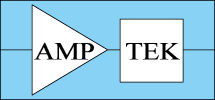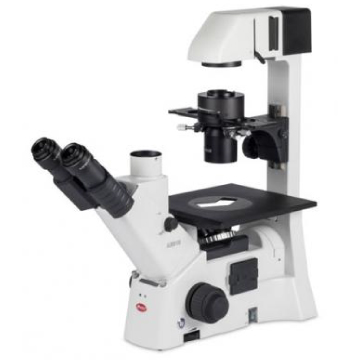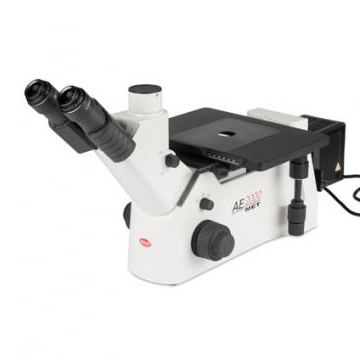INVERTED MICROSCOPES
An inverted microscope is a type of compound microscope with light source and condenser located above the specimen, while the objectives are located below.
There are several advantages of inverted microscopes over upright microscopes: i) For upright microscopes, the size of the sample is limited to an average height of 80 mm and a weight of 3 kg, depending also on the objective that is being used. However, inverted microscopes have greater working distance and it is possible to work with huge and heavy samples that weigh up to 30 kg. ii) Inverted microscopes enable to look at more samples in a shorter period of time. iii) It is not possible to crash the objective into the sample while working with inverted microscopes. iv) Sample preparation is faster and cheaper for inverted microscopes, since the sample can be taken as is and put on the stage. v) When the stage of an upright microscope is moved to the left, the image of the sample that is seen through the eyepieces moves to the right. However, the image of the sample moves in the same direction as the stage for inverted microscopes.
RotaLab offers a complete range of inverted microscopes with monocular, binocular and trinocular heads that are ergonomically designed for education, scientific research and routine tasks. Contrast techniques such as bright-field, phase-contrast and epi-fluorescence are covered by our inverted light microscopes.































